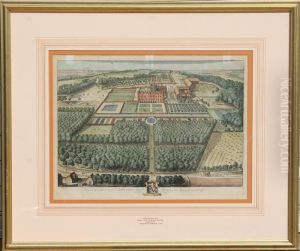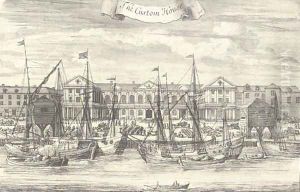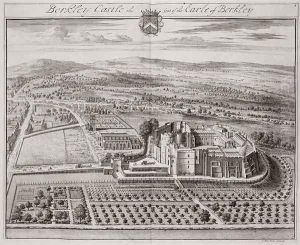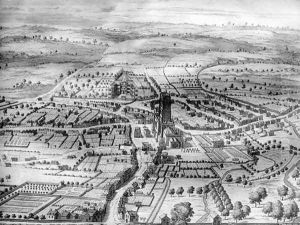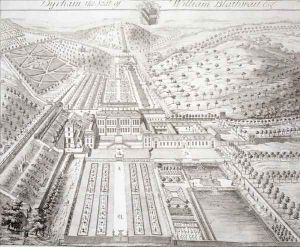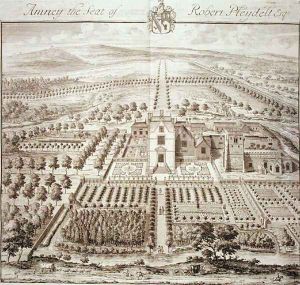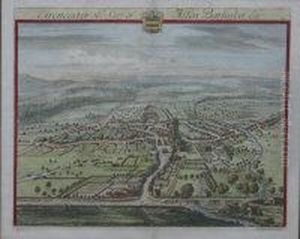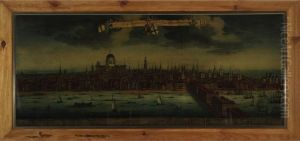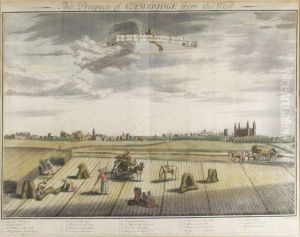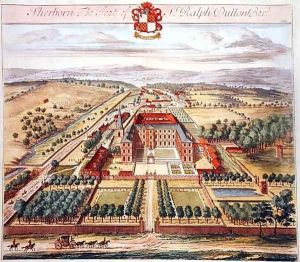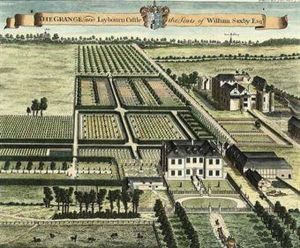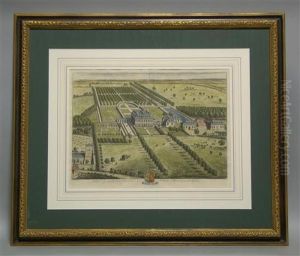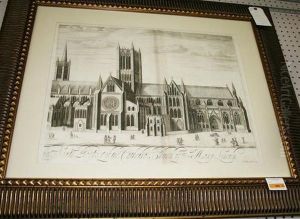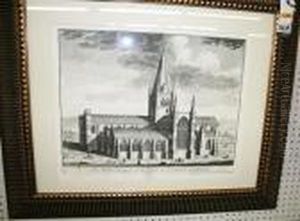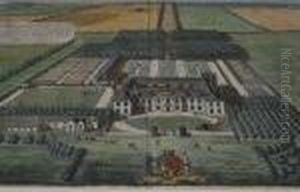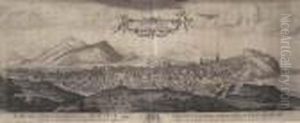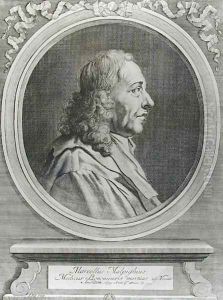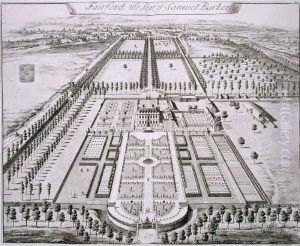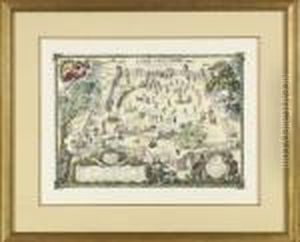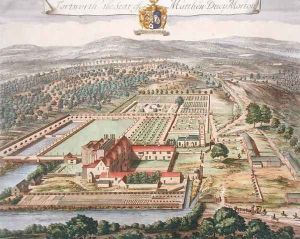Johannes Kip Paintings
Johannes Kip was a Dutch draughtsman, engraver, and print dealer who was active in England at the end of the 17th century and the beginning of the 18th century. He was born in Amsterdam in 1653 and is most renowned for his work on 'Britannia Illustrata', a series of topographical and historical prints of English and Welsh landmarks and estates.
Kip's early life in the Netherlands is not well documented, but it is known that he worked there as an engraver before moving to England around the Glorious Revolution in 1688. In England, Kip initially continued his work as an engraver and produced portraits and various other subjects.
His most significant contribution to the arts was through his collaboration with Leonard Knyff, a landscape painter with whom Kip produced the engravings for 'Britannia Illustrata'. Knyff would create detailed drawings of the houses and gardens of the English aristocracy, and Kip would then convert these into intricate engravings. These prints were highly sought after by the wealthy as a means of showcasing their estates and were also collected by those interested in the changing English landscape and architecture of the period.
Kip’s engravings are particularly important as a historical record of the English countryside prior to the Industrial Revolution. They depict a landscape that, in many cases, has been significantly altered or no longer exists. Kip’s work is noted for its attention to detail and accuracy, and his prints remain a valuable resource for historians and art historians alike.
Johannes Kip died in Westminster in 1722. His engravings continue to be studied and admired for their artistic quality and historical significance. Kip's work provides an extensive visual record of the architecture and gardens of the late 17th and early 18th centuries, and his legacy is preserved in numerous collections and museums around the world.
